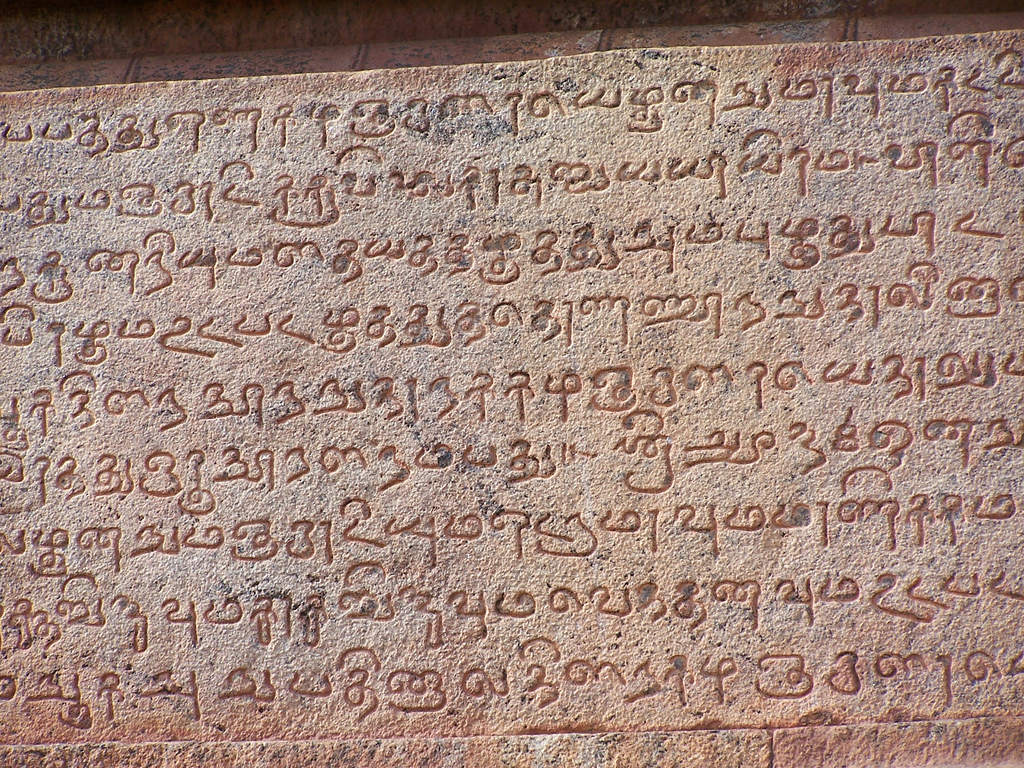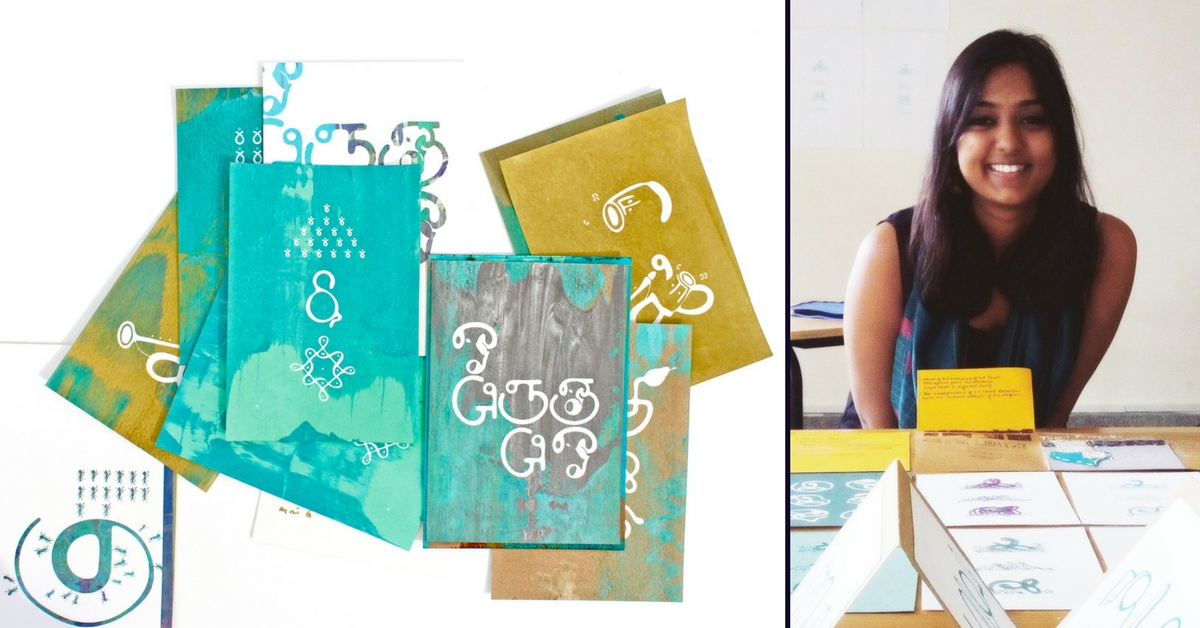Letterforms have played an indispensable role in lending languages a tangible form as we have come to know today.
Carried down through centuries and millennia, it is indeed the time-tested accounts penned down by historians that have helped preserve much of the world history, except those annals that were passed down orally and became lost with the passage of time.
In a country as diverse India, one can’t ascertain the number of languages and dialects that have been spoken by communities since the dawn of civilisation.

While ancient scripts like Brahmi and Kharosthi now only remain charted in historical archives, most of the present day scripts roughly centre around Devanagari, Gurmukhi, Gujarati, Bengali, Oriya, Telugu, Tamil, Kannada, Malayalam, Urdu and Sindhi.
Intrigued by the ancient letterform of Tamil script and the oral tradition of vernacular proverbs, one art student in Bengaluru has pieced together an artwork that is bound to amaze you with its ingenious concept of integrating reimagined letterforms and timeless proverbs under a single canvas.
Inaipu, which means fusion in Tamil, is a pre-thesis project by Sneha Suresh, who is a final year student at Bengaluru-based Srishti Institute of Art, Design and Technology, a private design school.
The printmaking project was conceptualised to visually represent the metamorphosis of the oral tradition of Tamil proverbs in form of evolved letterforms through a more imaginative manner.
“The project is based on the amalgamation of the oral tradition and visual culture, metaphors, material culture and symbols of Tamil Nadu. I’ve tried to bring out the real and the imagined mentioned in the oral tradition of proverbs through visuals,” says Sneha to The Better India.
To explain her work more elaborately, Sneha had chosen single or double letterforms for each proverb that have been refashioned to portray the saying in the best possible manner.
Take, for instance, the proverb, “Yaanai chattiyilum kuzhiyilum oondoo,” which means, when an elephant gets lost, you must also look for it in the unlikeliest of places, even a pot.
“Here, I’ve used two letterforms, one that looks like a pot and the other that looks like an elephant’s face. At one point, the letterforms have been combined to depict the elephant hiding inside a pot,” Sneha explains.
Some of other renditions are as follows:
Idli thirupaadhe!
Choru kanda logam swaraga loagam
Ennai kudathai suttrum, erambu pola
“It is something that I’ve always regretted but now, as a visual artist and a visual communication design student, my interest in letterforms has spurred enough for the project to have become a pathway for me to get close to my cultural roots,” she explains.
So, how did a person with no formal knowledge of a language as intricate as Tamil, decipher complex proverbs and seamlessly incorporate it into her work?
“The story couldn’t get any less interesting. Growing up in an unlikely household where both of my grandmothers live together, every instance elicited an incidental proverb that went on to take root in my psyche and subsequently in my project. As of translation, my mother, Rajani Suresh took a significant measure out of her busy work life to help me out,” she fondly recalls.
The vivid splash of colours used in the project finds heavy inspiration from the iconic temple architecture and vibrant costume culture of Tamil Nadu, following extensive research by Sneha.
“From the exquisite gopurams (gatehouse tower) of temples to intricate motifs in a Kanchipuram saree, every visible motif and colour palette that embodies the Tamil cultural heritage has invariably found its way into Inaipu,” she states.
Inaipu isn’t the only work of art that you can give the young woman credit for.
During her first year at Srishti, Sneha showcased her entrepreneurial skills by launching Tucksac, an online store that offers you ethnic roll-up stationery pouches, bags, customised laptop sleeves and slings.
Involving techniques such as screen printing and dyeing that she had learnt in college along with branding and packaging, Sneha set out to design sustainably ethical accessories with fabrics and avoids the use of plastic and leather.
Now that she has begun discovering the facets and nuances of the Tamil letterform, Sneha intends to take Inaipu much further and for the pure love of the language and art, aims to foray deeper into the vernacular realm and various letterforms.
She also plans on learning the language, which by now should be lesser of a task, given the amount of time that she has spent studying each letterform and associating it with corresponding sounds. “This time I really intend to learn it,” she laughs.
Like this story? Or have something to share?
Write to us: contact@thebetterindia.com
Connect with us on Facebook and Twitter.
NEW: Click here to get positive news on WhatsApp!
We bring stories straight from the heart of India, to inspire millions and create a wave of impact. Our positive movement is growing bigger everyday, and we would love for you to join it.
Please contribute whatever you can, every little penny helps our team in bringing you more stories that support dreams and spread hope.

